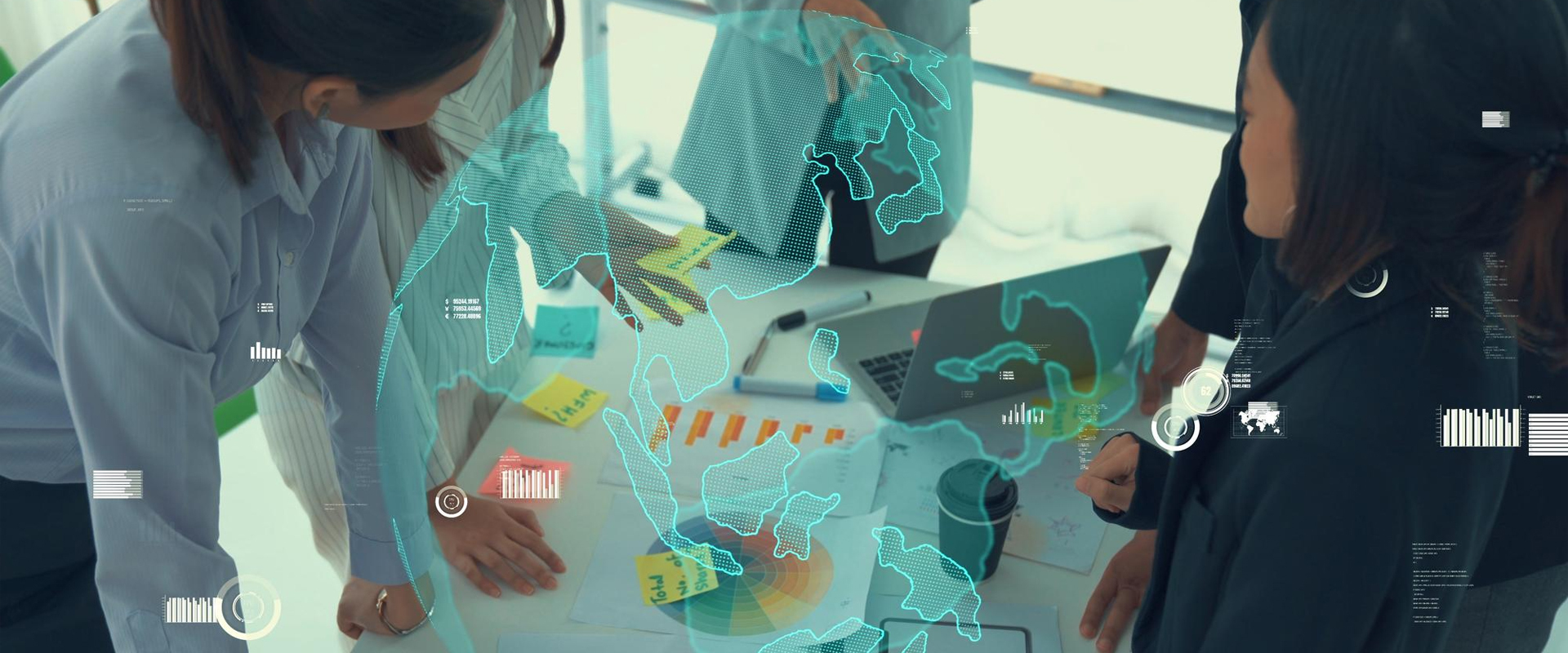

What are the 4 phases of clinical trial?
Last Updated on March 28, 2024
Before utilizing new therapies or medications on humans, researchers spend many years developing them in the lab. Subsequently, they plan how the clinical trial will progress in several steps known as phases of clinical trials. At each stage, an evaluation determines if the risks outweigh the advantages. The data collection in each phase is crucial in deciding whether the study can proceed to the next. It also determines whether the medication or therapy is authorized for usage.
Phases of clinical trials serve different purposes, ranging from Phase I’s large-scale evaluation of treatment efficacy in a small sample of healthy volunteers to Phase III’s comprehensive safety testing. Phase IV trials assess the long-term effects of a medication after it is approved and put on the market. Comprehending these stages enables us to value the extensive testing procedure and the exacting quality. A new treatment must receive approval before becoming widely accessible.
Clinical Trials’ Contribution to Medical Advancements
Clinical trials are crucial in advancing medical knowledge and providing access to new therapies. Moreover, they are a complex and diverse process that connects innovative medical concepts to practical patient care.
Additionally, phases of clinical trials focus on safety, efficacy, effectiveness, and long-term effects. Specifically, Phase 1 focuses on safety, determining optimal dosage and adverse effects, while Phase 2 assesses efficacy. Furthermore, Phase 3 evaluates the effectiveness of the novel treatment compared to current standards, and Phase 4 monitors long-term effects after treatment licensing and sale. Consequently, these stages are controlled and systematic, ensuring participant safety and public confidence.
Furthermore, understanding the purpose and design of clinical trials is essential for making a difference in healthcare and improving health and society. Additionally, informed consent is necessary for participants to understand the study’s risks, benefits, and nature. Finally, clinical trials are a significant factor in medical advancements, and participation can leave a legacy of improved health for future generations.
A Glimpse of the 4 Phases of Clinical Trials
The following table concisely overviews the 4 phases of a clinical trial, outlining their primary objectives. In addition, participant groups, sample sizes, study designs, and key focuses.
Moreover, it offers readers a quick reference guide to grasp the essential elements of each phase within the context of clinical trials.
| Phase | Objective | Participant Group | Sample Size | Study Design | Key Focus |
|---|---|---|---|---|---|
| Phase 1 | Safety assessment, dosage determination | Healthy volunteers | Small (20-100) | Dose-escalation, ADME profiling | Safety and tolerability |
| Phase 2 | Preliminary efficacy in the target population | Patients with the specific condition | Moderate (100-500) | Randomized, controlled trials | Efficacy, optimal dosage, safety |
| Phase 3 | Confirm effectiveness and safety on a large scale | Diverse patient population | Large (1000-5000+) | Randomized, double-anonymized, placebo-controlled trials | Robust efficacy and safety data |
| Phase 4 | Post-approval surveillance, real-world impact | Patients in real-world settings | Varied, post-marketing | Observational studies, registries | Long-term safety, effectiveness, real-world outcomes |
4 Phases of Clinical Trial in Detail
Phase 1 Clinical Trial
Phase 1 clinical trials are crucial in assessing the safety and tolerability of new human drugs or treatments. In this initial stage, researchers recruit patients for adverse effects and determine the maximum dose that can be administered without causing harmful side effects.
The No-Observed-Adverse-Effect Level (NOAEL) is also determined to establish a safe starting dose for the trials. Assessing acute side effects to ensure immediate safety and monitoring vital signs to detect physiological changes is essential. Furthermore, the drug’s impact on organs and abnormal by-products can be measured by conducting blood and urine analyses.
Researchers then conduct dose escalation studies, gradually increasing the dose for subsequent groups to find the highest dose without significant side effects. Additionally, researchers perform pharmacodynamic evaluation, considering biomarkers and their changes in response to the drug.
Moreover, researchers also assess drug-drug interactions to ensure the new drug does not adversely interact with common medications. In addition, multiple-dose studies examine the effects of the drug, evaluating how it accumulates in the body and its tolerability over time. Researchers meticulously record adverse events better to understand the risk profile of the new drug.
The intimate setting of Phase 1 clinical trials allows for personalized monitoring, ensuring safety and evaluating the initial efficacy of the investigational drug. Healthy volunteers are vital in assessing a drug’s safety profile, dosage range, and side effects. Additionally, their participation helps establish the initial data on the drug’s pharmacodynamics, shaping the path for subsequent phases of clinical trials. Ensuring a diverse pool of volunteers is essential for generalizing findings and understanding different group responses to new medications.
Phase 2 Clinical Trial
Moving to Phase 2 of clinical trials, it represents a critical phase in the drug development journey. Moreover, the following stage focuses on determining the efficacy and safety of new treatments within a larger group of participants. Several dozen to 300 patients with the ailment the new medicine treats compose this group. Researchers compare the drug’s therapeutic effects against existing treatments or placebos, allowing for refined dosage levels based on efficacy and side-effect profiles.
Phase 2 trials represent a beacon of hope for patients and healthcare professionals eagerly awaiting breakthroughs, elucidating innovative treatments’ potential benefits and risks. Additionally, the data gathered sets a firm foundation for the expansive Phase 3, which is gradually moving toward the final goal of entering the market and improving patient care.
Moreover, biomarkers and assessments play a vital role in this phase, enhancing the predictive power of these trials by providing a multifaceted perspective of a drug’s performance. This extensive data accelerates Phase 3 and allows for a more tailored approach, ultimately reducing clinical development time and expenses.
Furthermore, the initial safety data from Phase 1 clinical trials significantly broadens the participant demographic. This expansion allows researchers to gather more robust data regarding the drug’s therapeutic effect optimal dosing ranges, and track any adverse reactions with increased statistical power. Importantly, this stage is crucial in determining the medication’s potential for real-world application and sets the stage for even larger-scale testing in subsequent phases of clinical trials.
As clinical trials progress, researchers rely on sophisticated assessments such as imaging, genomics, and blood tests to construct a robust foundation for decision-making in Phase 3.
Emphasizing the importance of these evaluations supports the integrity of clinical trial outcomes and guides healthcare professionals and stakeholders through the complex landscape of drug development.
Phase 3 Clinical Trial
Phase 3 of clinical trials involves monitoring a larger patient population to identify rare or long-term adverse events, thus providing healthcare professionals with essential information for prescribing guidelines. Additionally, this stage is crucial for satisfying regulatory agencies and ensuring the dissemination of vital data that could herald the introduction of life-changing treatments into the market.
Furthermore, examples of Phase 3 trials include new cancer medications, heart disease treatment developments, Alzheimer’s Disease studies, vaccine efficacy and safety assessments, gene therapy for rare genetic disorders, advancements in diabetes treatments, and new antidepressants on the horizon.
Phase 4 Clinical Trial
Moving into Phase 4 becomes imperative as the final safeguard in the pharmaceutical development process. Additionally, it involves ongoing safety monitoring, or post-marketing surveillance, to identify any long-term or rare side effects not previously detected. This phase involves broader population groups over extended periods, providing a more comprehensive understanding of how a drug performs in the real world.
Moreover, by diligently capturing patient data across various demographics, healthcare providers can make more informed decisions, and regulatory authorities can fine-tune their recommendations or intervene if necessary.
Engaging actively with Phase 4 exemplifies a commitment to patient safety and reinforces trust in pharmaceutical products.
Furthermore, these post-approval studies hold immense importance in the ever-evolving healthcare landscape. Phase 4 tracks pharmaceutical products’ long-term effects, focusing on rare or late-appearing side effects. This phase involves a diverse cross-section of the population, helping assess how different demographic groups respond to the medication over a more extended period. Additionally, the data from Phase 4 enables regulatory authorities to refine dosage recommendations and update guidelines, thereby enhancing drug safety profiles.
Furthermore, in some instances, this ongoing research can identify additional therapeutic uses for the medication and broaden the scope of treatment options available to patients.
How do the Results of Clinical trials assist in making Treatments Better?
Clinical trial results are crucial in improving treatment by translating data into actionable strategies. Moreover, this process refines patient care, identifies potential improvements, and confirms the efficacy of new therapies. Regulatory authorities also benefit from these findings, as they inform guidelines and approve novel interventions. Furthermore, publicizing these developments is essential for informed healthcare decisions and fostering trust in the clinical trial process.
What is the Duration of the Clinical trial?
Clinical trials’ length depends on several variables that assess long-term effects and benefits. For instance, patient recruitment rates, the complexity of the study protocol, and the requirement for longitudinal follow-up. External influences like regulatory changes, funding shifts, and public health emergencies can significantly alter the trial’s progress. It is crucial to understand these steps for stakeholders and potential participants seeking clarity on the journey from the laboratory to the pharmacy shelf.
For pharmaceutical companies, researchers, and healthcare professionals, offering transparent insights into trial durations reinforces trust and engagement. The aim is to enhance the public’s understanding of the dedication required to bring new techniques to the market of your clinical research sites by sharing success stories and discussing the tangible benefits of clinical trials.
At Minerva Research Solution, we can demystify the journey from research to recovery and empower patients with cutting-edge treatment options.
Final Thoughts
In conclusion, clinical trials are crucial in making better medicines and treatments for everyone.
They help doctors and scientists understand how new drugs work and if they are safe.
Moreover, the different phases of clinical trials guarantee that medicines are effective and secure. Furthermore, these trials take time, but it is necessary to ensure treatments are the best they can be. Additionally, by participating in trials, people become heroes, helping to improve healthcare for everyone. Therefore, the next time you hear about clinical trials, remember that they’re vital to creating safer, better treatments that can improve lives.





